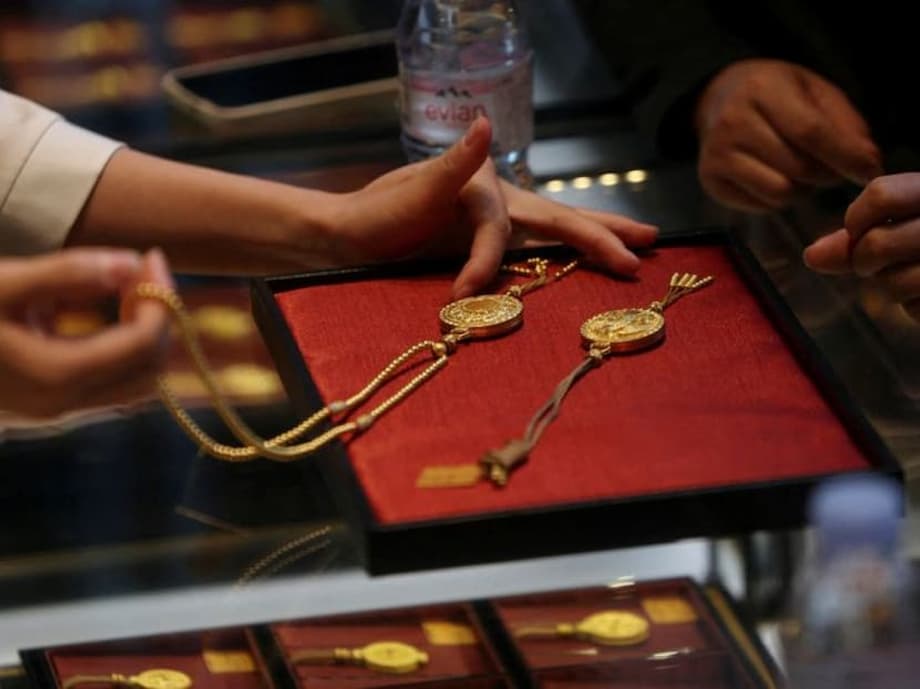The Meteoric Rise of Laopu
In the heart of China’s luxury market, a new star has emerged, captivating consumers and investors alike: Laopu Gold. Dubbed the “Hermès of gold,” Laopu has rapidly become a symbol of modern Chinese luxury, blending traditional craftsmanship with contemporary design and cultural pride. As Western luxury brands like Cartier and Tiffany face declining sales in China, Laopu’s ascent signals a profound shift in consumer preferences and the global luxury landscape.
- The Meteoric Rise of Laopu
- What Sets Laopu Apart in the Crowded Jewellery Market?
- Why Are Chinese Consumers Turning Away from Western Luxury?
- Financial Performance: Outpacing Global Rivals
- Laopu’s International Ambitions: Testing the Global Waters
- Challenges and Risks: Can the Growth Last?
- The Broader Impact: Redefining Luxury in China and Beyond
- In Summary
What Sets Laopu Apart in the Crowded Jewellery Market?
Laopu’s success is rooted in its unique approach to jewellery. Unlike traditional Chinese jewellers who price gold pieces by weight, Laopu employs a fixed-price model that factors in design, craftsmanship, and exclusivity. This allows the brand to charge a premium, positioning its products as luxury goods rather than mere investments in precious metal. Each piece is crafted using ancient techniques—such as filigree inlay and gold hammering—and features motifs deeply embedded in Chinese culture, from dragons and phoenixes to lotus flowers and auspicious gourds.
Founder Xu Gaoming, a former fisheries clerk, established Laopu in 2009. His vision was to create a brand that would resonate with a new generation of Chinese consumers seeking products that reflect both their heritage and their modern aspirations. By 2016, Laopu had evolved from a local shop into a national brand, and in 2024, it made its debut on the Hong Kong Stock Exchange. Since then, its stock price has soared over 2,000%, making it one of the hottest consumer stocks in Asia.
Laopu’s boutiques, often located in high-end malls, offer a curated shopping experience. The brand maintains exclusivity by limiting its number of stores—just over 40 across China as of mid-2025—and by producing limited-edition collections. During the 2024 Lunar New Year, customers queued for up to eight hours to purchase Laopu’s coveted pieces, fueling a sense of rarity and desire.
Design, Craftsmanship, and Cultural Storytelling
Laopu’s jewellery is more than adornment; it is a celebration of Chinese identity. Each collection is linked to myths, legends, or auspicious symbols, transforming jewellery into objects of personal and cultural significance. The brand’s bestselling gourd-shaped pendant, for example, is not only a fashion statement but also a talisman believed to bring good fortune. This storytelling approach resonates with consumers who value emotional and symbolic meaning in their purchases.
Industry experts highlight Laopu’s ability to blend the artisanal savoir-faire of Chinese goldsmithing with the elegance and refinement associated with Western luxury houses. This hybrid positioning has allowed Laopu to attract both traditional gold buyers and younger, design-conscious shoppers who might otherwise gravitate toward brands like Cartier or Bulgari.
Why Are Chinese Consumers Turning Away from Western Luxury?
For decades, Western luxury brands dominated China’s high-end market, with names like Louis Vuitton, Hermès, and Cartier serving as status symbols for the country’s burgeoning middle and upper classes. However, several factors have converged to shift consumer sentiment toward homegrown brands like Laopu:
- Cultural Confidence: The “guochao” trend—literally “national tide”—reflects a growing pride in Chinese culture and products. Consumers increasingly seek brands that celebrate their heritage and identity.
- Economic Uncertainty: With China’s economy facing headwinds, including a real estate downturn and trade tensions with the U.S., gold’s reputation as a store of value has become more attractive. Laopu’s jewellery offers both investment potential and aesthetic appeal.
- Changing Tastes: Younger consumers are moving away from ostentatious displays of wealth, preferring understated luxury and pieces with personal meaning. Laopu’s matte finishes and subtle designs cater to this shift.
- Social Media Influence: Platforms like Xiaohongshu (Little Red Book) have amplified Laopu’s popularity, with users sharing their purchases and creating a viral “FOMO” (fear of missing out) effect.
Vivian Wang, a Shanghai-based sales and marketing professional, described her experience:
“I’m a jewellery lover. Tiffany, Cartier or Bulgari, these are all brands I have bought. But after the pandemic, people want to pursue something more elevated that offers some spiritual sustenance.”
Wang’s story is echoed by many who now see Laopu as a way to express both personal style and cultural pride.
Financial Performance: Outpacing Global Rivals
Laopu’s financial results have stunned the industry. In the first half of 2025, revenue surged 251% to 12.35 billion yuan (about $1.72 billion), while net income jumped 286% to 2.27 billion yuan. Same-store revenue grew just over 200% compared to the previous year. These figures stand in stark contrast to the sluggish performance of many Western luxury retailers in China, who have struggled with declining consumer confidence and shifting tastes.
Laopu’s average store revenue surpasses that of most international jewellery brands operating in China. Its flagship store in Beijing’s SKP Mall is a major contributor to gold sales in the capital, and the brand’s “single-store king” reputation is reinforced by high customer engagement and sales per location. Chairman Xu Gaoming has set ambitious targets, aiming for 1 billion yuan in annual sales per store and planning to close any location generating less than 500 million yuan.
Citigroup analysts have noted that nearly 80% of Laopu’s customers overlap with those of five global luxury brands, including Louis Vuitton, Hermès, and Cartier. This suggests that Laopu is not merely attracting entry-level buyers but is also winning over high-end shoppers who previously favored Western labels.
Laopu’s International Ambitions: Testing the Global Waters
In June 2025, Laopu opened its first overseas boutique at Singapore’s Marina Bay Sands, a luxury shopping destination frequented by both locals and Chinese tourists. The response was immediate: queues stretched for hours, and the store quickly became a must-visit for jewellery enthusiasts. The Singapore outlet is the first of four planned international stores, with Japan confirmed as the next location.
Laopu’s international expansion is a calculated move. Singapore, with its large ethnic Chinese population and status as a global financial hub, offers a receptive market for heritage-inspired luxury. The brand introduced an exclusive diamond-inlaid gold cross for local customers, alongside its signature gourd necklaces and other culturally resonant pieces.
Jessie Lim, a Singaporean customer, shared her impression:
“The designs are very exquisite. Even the wings of the butterfly are double-layered. There are also diamonds inset into the pieces.”
Such attention to detail and craftsmanship has helped Laopu win over new fans abroad.
Analysts see Laopu as a serious competitor to Western luxury brands. Richemont, owner of Cartier, has warned investors about the brand’s rise, and LVMH executives have acknowledged the growing challenge posed by domestic Chinese jewellery houses. As Laopu tests its formula in international markets, the question remains whether it can sustain its momentum and build a truly global brand.
Challenges and Risks: Can the Growth Last?
Despite its remarkable success, Laopu faces several challenges that could impact its future trajectory:
- Market Saturation: The “heritage gold” jewellery market in China has grown rapidly, but experts caution that the craze may have limits. If gold prices continue to surge, some consumers may adopt a wait-and-see approach, leading to softer demand.
- Resale Value: Unlike gold bullion or investment-grade jewellery, Laopu’s pieces do not retain resale value proportional to their purchase price. The premium is tied to design and branding, which may not hold up in secondary markets.
- Competition: Laopu is up against both established domestic rivals—such as Chow Tai Fook, Chow Sang Sang, and Lao Feng Xiang—and international giants like Cartier and Bulgari. While Laopu’s fixed-price, design-driven model sets it apart, competitors are adapting quickly, introducing their own heritage-inspired collections.
- Profit Margins: Maintaining high profit margins while expanding internationally and scaling production could prove challenging, especially if consumer enthusiasm wanes or economic conditions deteriorate.
- Brand Perception: Some consumers still view Laopu as a lower-tier brand compared to European luxury houses. Overcoming this perception will be crucial as the company seeks to establish itself on the global stage.
Li Jie, director of the Luxury Brand Research Center at Shanghai Jiao Tong University, commented on Laopu’s prospects:
“So far so good, but I’m not sure whether they will continue to be successful or not. Laopu’s rise over the last two or three years is based on 16 years of effort, and a product that effectively addresses the functional, emotional and social needs of middle-class Chinese consumers.”
The Broader Impact: Redefining Luxury in China and Beyond
Laopu’s rise is emblematic of a broader transformation in China’s luxury market. As consumers become more discerning and culturally confident, domestic brands that offer authenticity, craftsmanship, and emotional resonance are gaining ground. This shift is not limited to jewellery; it is visible across categories, from fashion and cosmetics to automobiles and collectibles.
Western brands, long accustomed to easy growth in China, now face a more complex and competitive environment. To remain relevant, they must adapt to local tastes, embrace cultural storytelling, and innovate beyond their traditional playbooks. As Johann Rupert, chairman of Richemont, observed:
“Laopu’s success demonstrates how jewellery is a culturally driven market, and that turning cultural heritage into a brand is a valid path.”
For Laopu, the challenge will be to maintain its aura of exclusivity and cultural relevance while expanding its footprint at home and abroad. The brand’s ability to balance tradition with innovation, and to connect with consumers on both emotional and practical levels, will determine whether it can join the ranks of global luxury icons.
In Summary
- Laopu Gold has rapidly become China’s leading luxury jewellery brand, blending traditional craftsmanship with modern design and cultural storytelling.
- The brand’s fixed-price model, limited editions, and exclusive boutiques have fueled demand and created a sense of rarity.
- Laopu’s financial performance has outpaced both domestic and international rivals, with revenue and profits soaring since its 2024 IPO.
- Chinese consumers are increasingly favoring homegrown brands due to cultural confidence, economic uncertainty, and changing tastes.
- Laopu’s international expansion, starting with Singapore, signals its ambition to become a global luxury player.
- Challenges remain, including market saturation, competition, and the need to sustain brand prestige and profitability.
- Laopu’s rise reflects a broader shift in China’s luxury market, with authenticity and cultural resonance now key drivers of success.




